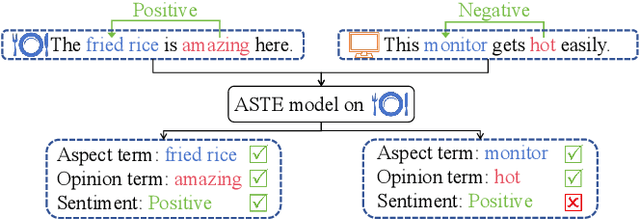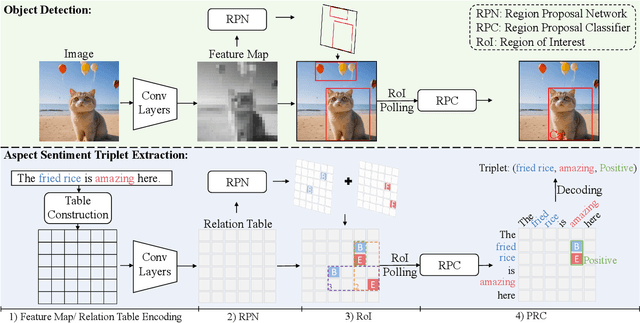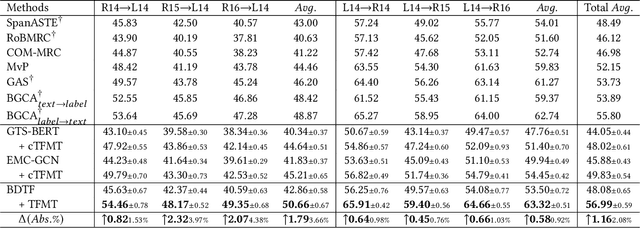Yanxian Bi
Table-Filling via Mean Teacher for Cross-domain Aspect Sentiment Triplet Extraction
Jul 23, 2024



Abstract:Cross-domain Aspect Sentiment Triplet Extraction (ASTE) aims to extract fine-grained sentiment elements from target domain sentences by leveraging the knowledge acquired from the source domain. Due to the absence of labeled data in the target domain, recent studies tend to rely on pre-trained language models to generate large amounts of synthetic data for training purposes. However, these approaches entail additional computational costs associated with the generation process. Different from them, we discover a striking resemblance between table-filling methods in ASTE and two-stage Object Detection (OD) in computer vision, which inspires us to revisit the cross-domain ASTE task and approach it from an OD standpoint. This allows the model to benefit from the OD extraction paradigm and region-level alignment. Building upon this premise, we propose a novel method named \textbf{T}able-\textbf{F}illing via \textbf{M}ean \textbf{T}eacher (TFMT). Specifically, the table-filling methods encode the sentence into a 2D table to detect word relations, while TFMT treats the table as a feature map and utilizes a region consistency to enhance the quality of those generated pseudo labels. Additionally, considering the existence of the domain gap, a cross-domain consistency based on Maximum Mean Discrepancy is designed to alleviate domain shift problems. Our method achieves state-of-the-art performance with minimal parameters and computational costs, making it a strong baseline for cross-domain ASTE.
 Add to Chrome
Add to Chrome Add to Firefox
Add to Firefox Add to Edge
Add to Edge